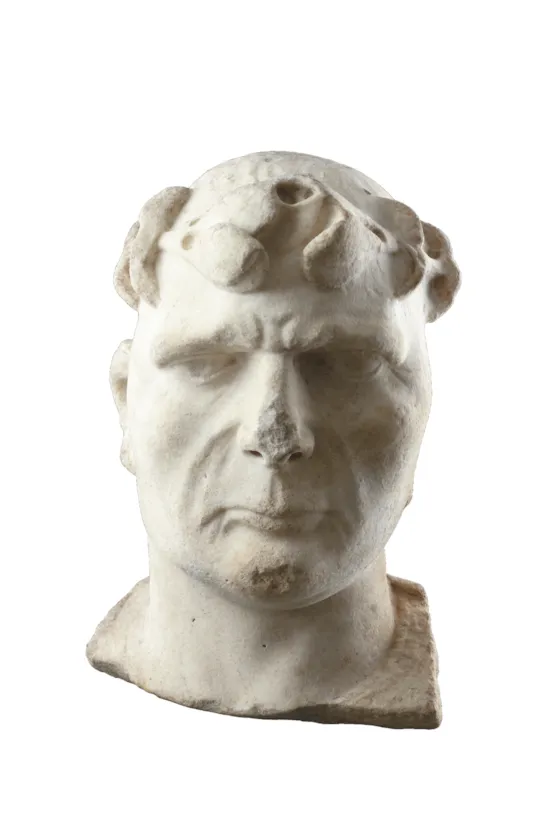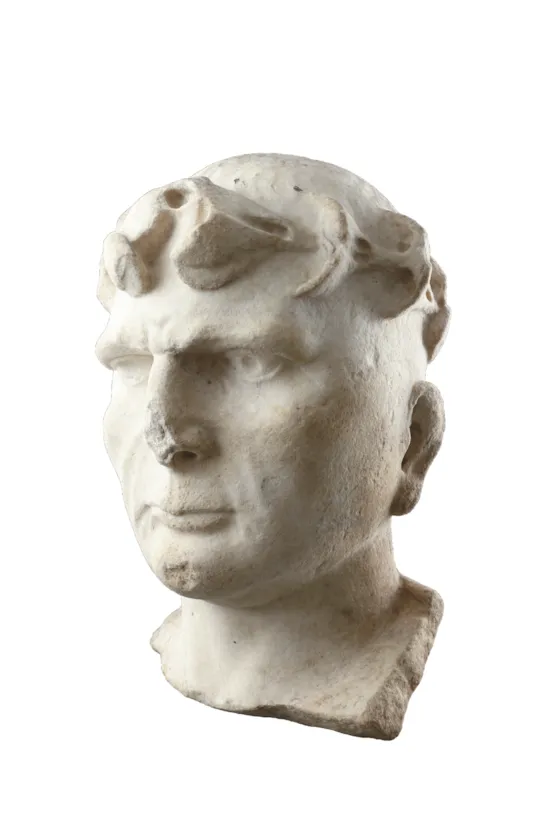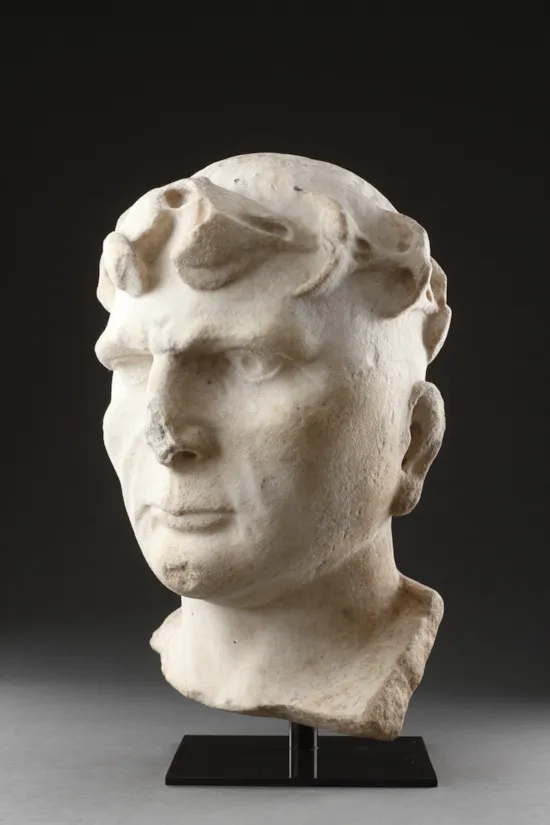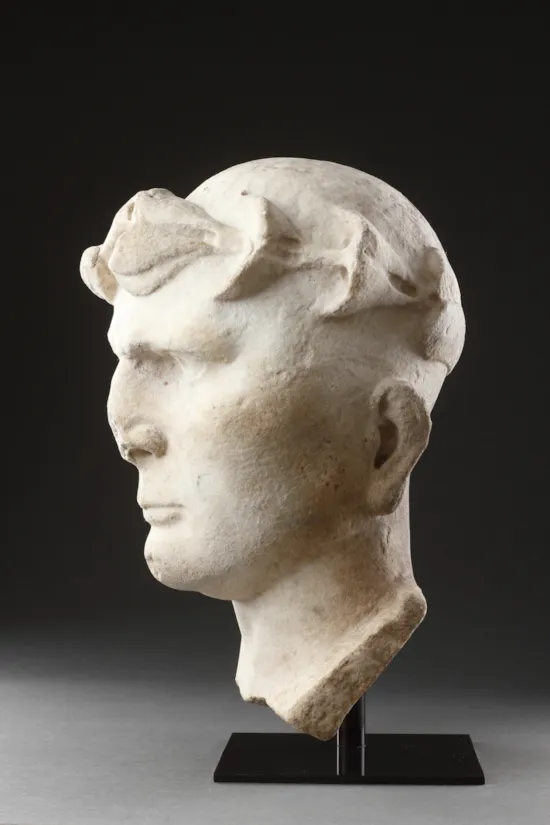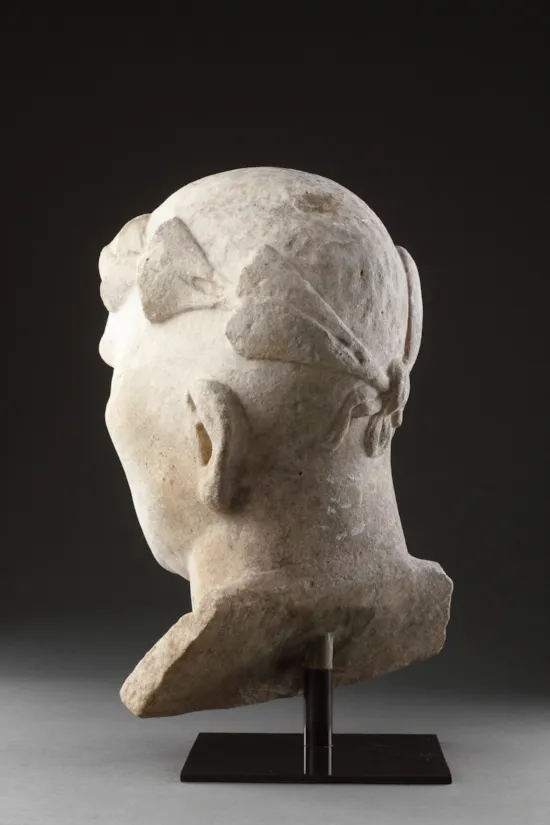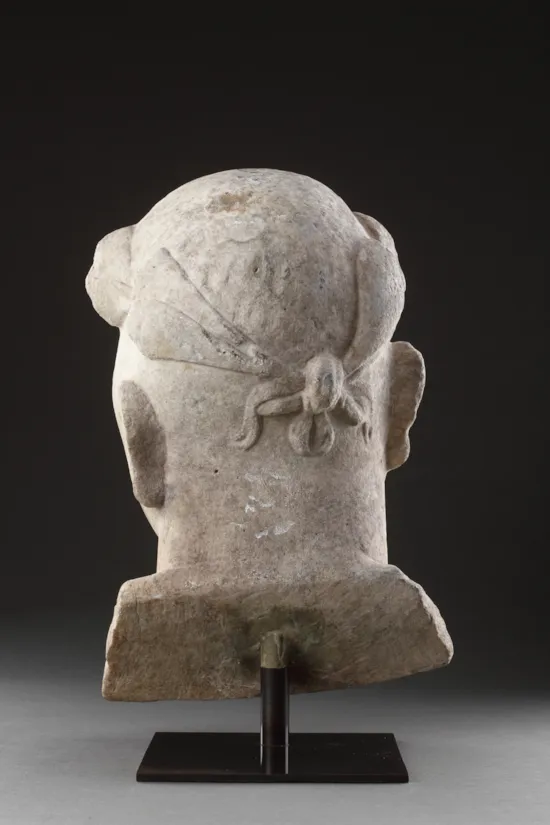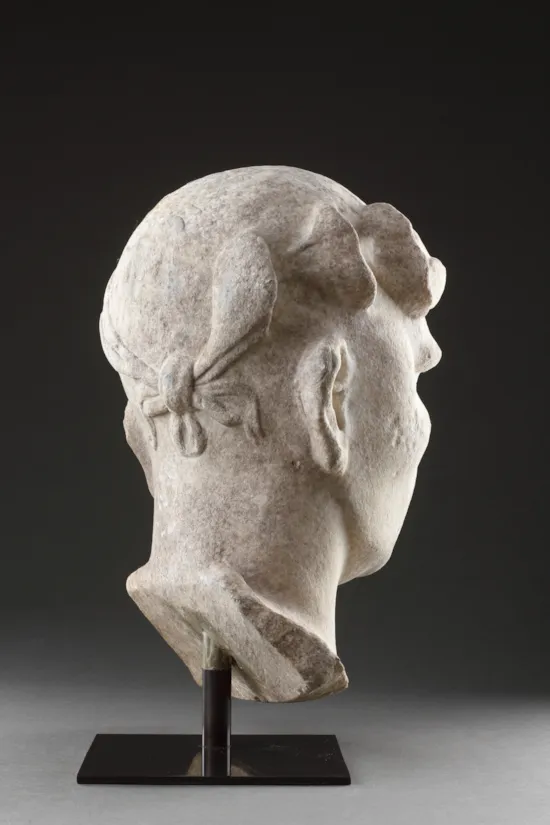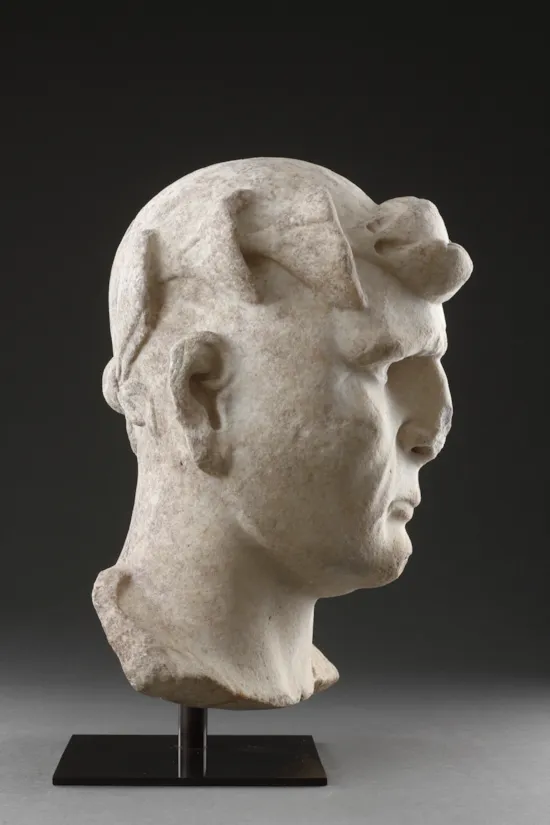An Over Life-Size Powerful Roman Male Portrait Head of Constantine the Great (c.272 - 337)
An Over Life-Size Powerful Roman Male Portrait Head of Constantine the Great (c.272 - 337)
Wearing the ‘Imperial Oak Wreath’ the decorative border of his ‘tunic’ can still be clearly seen on the left hand side
Marble
Italy
Early 4th Century AD
SIZE: 38cm high, 24.5cm wide, 25cm deep - 15cm high, 9¾ ins wide, 10 ins deep
Wearing the ‘Imperial Oak Wreath’ the decorative border of his ‘tunic’ can still be clearly seen on the left hand side
Marble
Italy
Early 4th Century AD
SIZE: 38cm high, 24.5cm wide, 25cm deep - 15cm high, 9¾ ins wide, 10 ins deep
An Over Life-Size Powerful Roman Male Portrait Head of Constantine the Great (c.272 - 337)
Wearing the ‘Imperial Oak Wreath’ the decorative border of his ‘tunic’ can still be clearly seen on the left hand side
Marble
Italy
Early 4th Century AD
SIZE: 38cm high, 24.5cm wide, 25cm deep - 15cm high, 9¾ ins wide, 10 ins deep
Wearing the ‘Imperial Oak Wreath’ the decorative border of his ‘tunic’ can still be clearly seen on the left hand side
Marble
Italy
Early 4th Century AD
SIZE: 38cm high, 24.5cm wide, 25cm deep - 15cm high, 9¾ ins wide, 10 ins deep
In AD 306, Constantine was hailed emperor in the Roman city of York; he was the first emperor to convert to Christianity. Born in Naissus, the son of Flavius Constantius, and Helena, a woman of low birth and a christian. Following his campaigns in the eastern provinces, Constantine was recalled in 305 AD to fight alongside his father in the province of Britannia. After his father’s death in 306 AD, Constantine was acclaimed as ‘imperator’ by his army at Eboracum (York) eventually being declared victorious after the civil wars against emperors, Maxentius and Licinius to become sole ruler of the Roman Empire in 324 AD.
Constantine’s Christian belief cannot be underestimated, establishing the foundations of ‘Western Christendom’. In 313 AD he was influential in the proclamation of the ‘Edict of Milan, declaring tolerance of Christianity within the Roman Empire. The Church of the Holy Sepulchre, the purported site of Jesus’s tomb in Jerusalem, was built on his orders, considered the holiest place in all of ‘Christendom’.
The ‘age’ of Constantine marked a distinct epoch in the history of the Roman Empire marking a pivotal moment of transition from ‘classical antiquity’ to the ‘middle ages’. Building a new residence in the city of Byzantium, renaming it New Rome, which later become known as Constantinople, it subsequently become the capital of the ‘empire’ for the next one thousand years, the Eastern Roman Empire also known as the ‘Byzantine Empire’. Eventually known as modern day Istanbul.
Constantine’s Christian belief cannot be underestimated, establishing the foundations of ‘Western Christendom’. In 313 AD he was influential in the proclamation of the ‘Edict of Milan, declaring tolerance of Christianity within the Roman Empire. The Church of the Holy Sepulchre, the purported site of Jesus’s tomb in Jerusalem, was built on his orders, considered the holiest place in all of ‘Christendom’.
The ‘age’ of Constantine marked a distinct epoch in the history of the Roman Empire marking a pivotal moment of transition from ‘classical antiquity’ to the ‘middle ages’. Building a new residence in the city of Byzantium, renaming it New Rome, which later become known as Constantinople, it subsequently become the capital of the ‘empire’ for the next one thousand years, the Eastern Roman Empire also known as the ‘Byzantine Empire’. Eventually known as modern day Istanbul.
Ex Private collection, Cambridge, England
LITERATURE:
Rinaldi Tufi, S., Yorkshire. ‘Corpus Signorum Imperii Romani (Great Britain)’; vol. 1, fasc. 3, Yorkshire. Oxford University Press, 1983; 23, no. 38, pl. 12
note:
For a very similar over life-size portrait head of Constantine I (the Great) wearing an identical wreath dating from the early 4th century AD see: Yorkshire Museum, York, inv. no. ‘YORYM’ 1998.23. Found in ‘Eboracum’ (York) in 1823
LITERATURE:
Rinaldi Tufi, S., Yorkshire. ‘Corpus Signorum Imperii Romani (Great Britain)’; vol. 1, fasc. 3, Yorkshire. Oxford University Press, 1983; 23, no. 38, pl. 12
note:
For a very similar over life-size portrait head of Constantine I (the Great) wearing an identical wreath dating from the early 4th century AD see: Yorkshire Museum, York, inv. no. ‘YORYM’ 1998.23. Found in ‘Eboracum’ (York) in 1823
An Over Life-Size Powerful Roman Male Portrait Head of Constantine the Great (c.272 - 337)
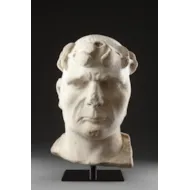
SOLD
